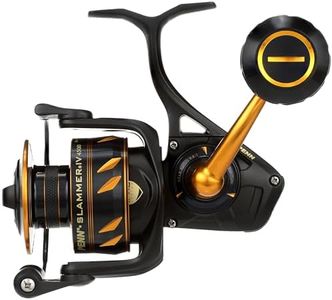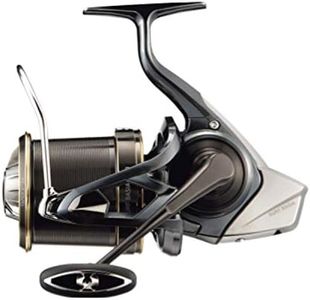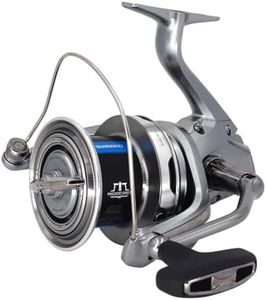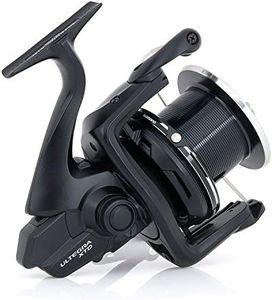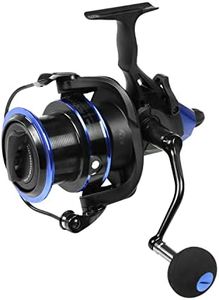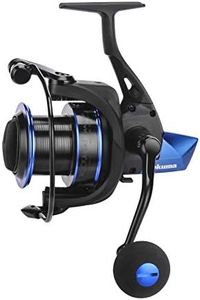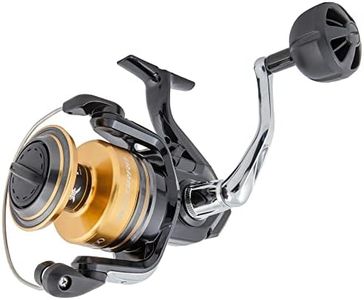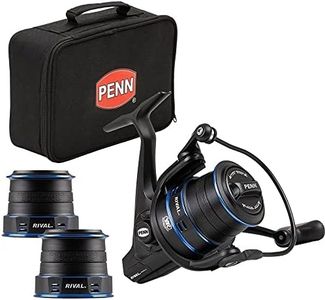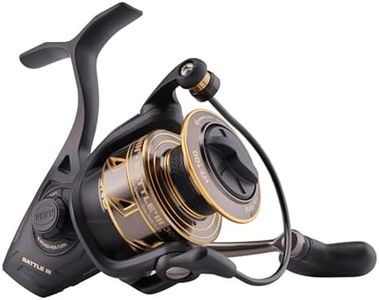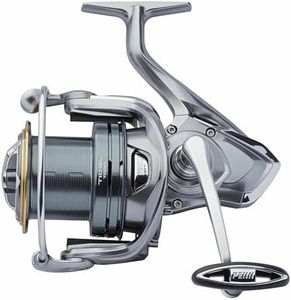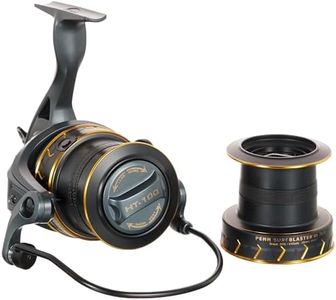We Use CookiesWe use cookies to enhance the security, performance,
functionality and for analytical and promotional activities. By continuing to browse this site you
are agreeing to our privacy policy
10 Best Surf Fishing Reels
From leading brands and best sellers available on the web.Buying Guide for the Best Surf Fishing Reels
When choosing a surf fishing reel, it's important to focus on how and where you plan to fish from the shore. These reels are designed to handle long casts, big waves, and the potential for catching larger fish. Key decisions come down to factors that influence casting distance, resistance to saltwater corrosion, and managing heavier lines or fish. Understanding the core specifications will help you make a choice that matches your skill level and fishing goals.Reel SizeReel size refers to the physical dimensions and line capacity of the reel. This is crucial because surf fishing often requires longer casts and the chance to land bigger fish, which demands a reel that can hold more and heavier line. Reel sizes usually range from small (3000-4000) to medium (5000-6000) to large (7000 and up). A smaller size might suit you if targeting smaller coastal fish or lighter tackle; medium-sized reels are great all-rounders for mixed targets, while larger reels are best for long distance casting and handling truly big catches. Think about what fish species you plan to catch and match the reel size accordingly.
Drag SystemThe drag system controls how much resistance a fish feels when it pulls on the line. It's important because too little drag means a fish can break your line, while too much can pull the hook from a fish's mouth or snap light lines. Drag ratings are usually measured in pounds or kilograms. Low drag is fine for small fish or light lines, while high drag is needed for larger fish and heavier lines. If you aim to catch bigger, hard-fighting fish, look for a reel with a strong, smooth drag system that matches your fishing line and target species.
Line CapacityLine capacity tells you how much line (in yards or meters) a reel can hold at a certain thickness. This is especially important for surf fishing because long casts and strong fish can take a lot of line. Reels with higher line capacity (both in length and thickness) are better for surf fishing since they let you cast further and handle longer runs from fish. Consider both the length and strength of line you'll use depending on the distance you want to cast and the size of fish you expect to catch.
Gear RatioGear ratio refers to how many times the bail rotates for each turn of the handle. A high gear ratio means faster line retrieval, which helps when you need to bring your bait or catch in quickly. Lower gear ratios provide more cranking power, useful for reeling in big, heavy fish but at a slower speed. If you target species that make long, fast runs, or you often fish in strong currents, a lower gear ratio (around 4.5:1 to 5.5:1) gives you control. For quick bait retrieval and smaller fish, a higher gear ratio (6.0:1 and above) might suit you better.
Corrosion ResistanceSurf fishing exposes your gear to saltwater and sand, which can quickly damage reels that aren't designed for it. Corrosion resistance means the reel uses materials like stainless steel, anodized aluminum, or special coatings to prevent rust and wear. This is a must-have spec for surf fishing because it prolongs the life of your reel. If you fish in saltwater often, pick a reel specifically advertised for its resistance to corrosion to avoid issues down the line and make cleaning after each trip easier.
Seal and WaterproofingSeals and waterproofing refer to how effectively a reel keeps out water and sand. Good sealing helps maintain smooth performance and protect internal gears and bearings. For surf anglers who deal with breaking waves and lots of spray, a more thoroughly sealed reel is critical. If you fish from dry sand and don't expect your gear to get very wet, less sealing might be acceptable. But if you often wade in or your reels are exposed to splashing and submersion, go for a reel with enhanced waterproofing features.
